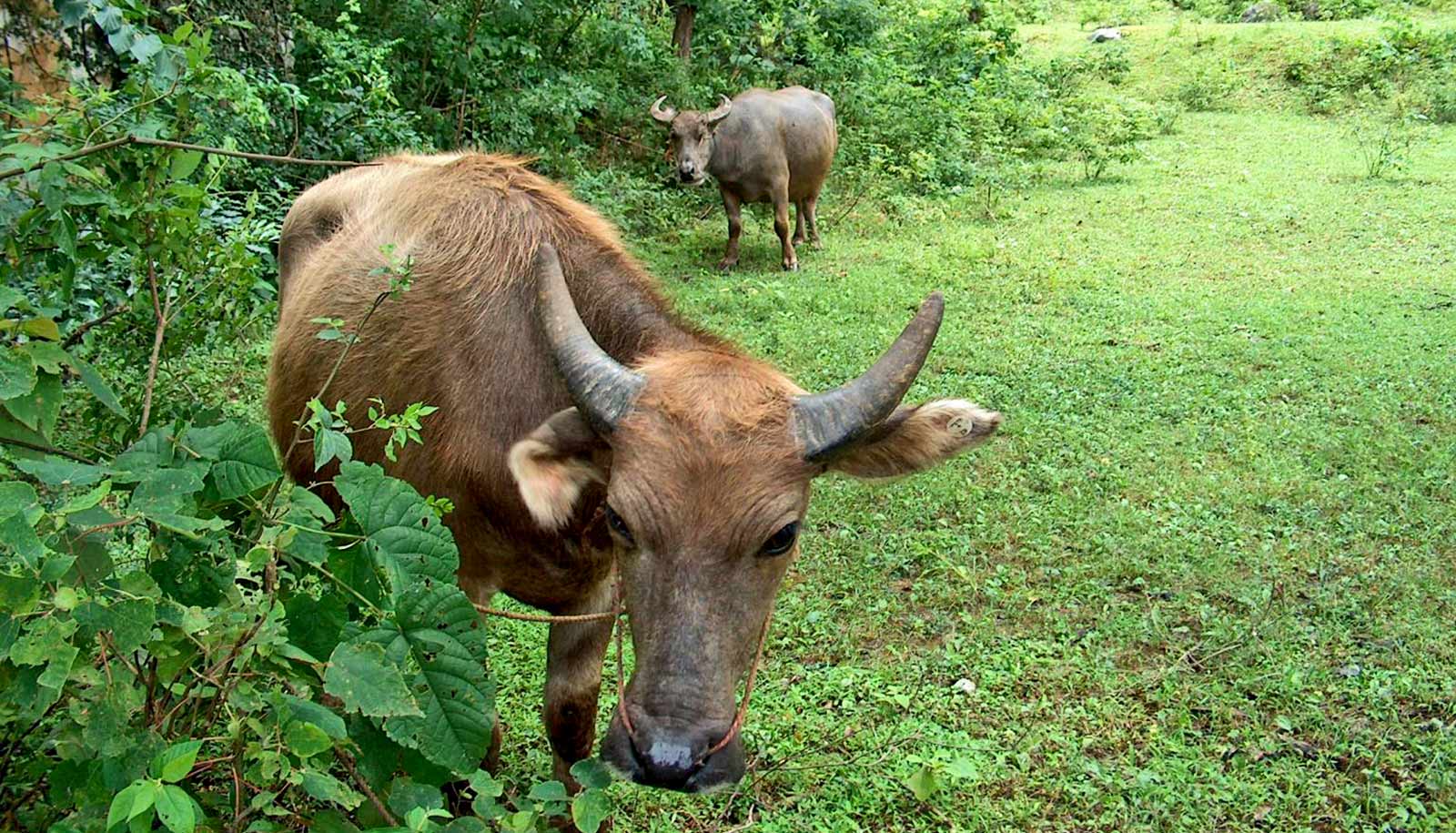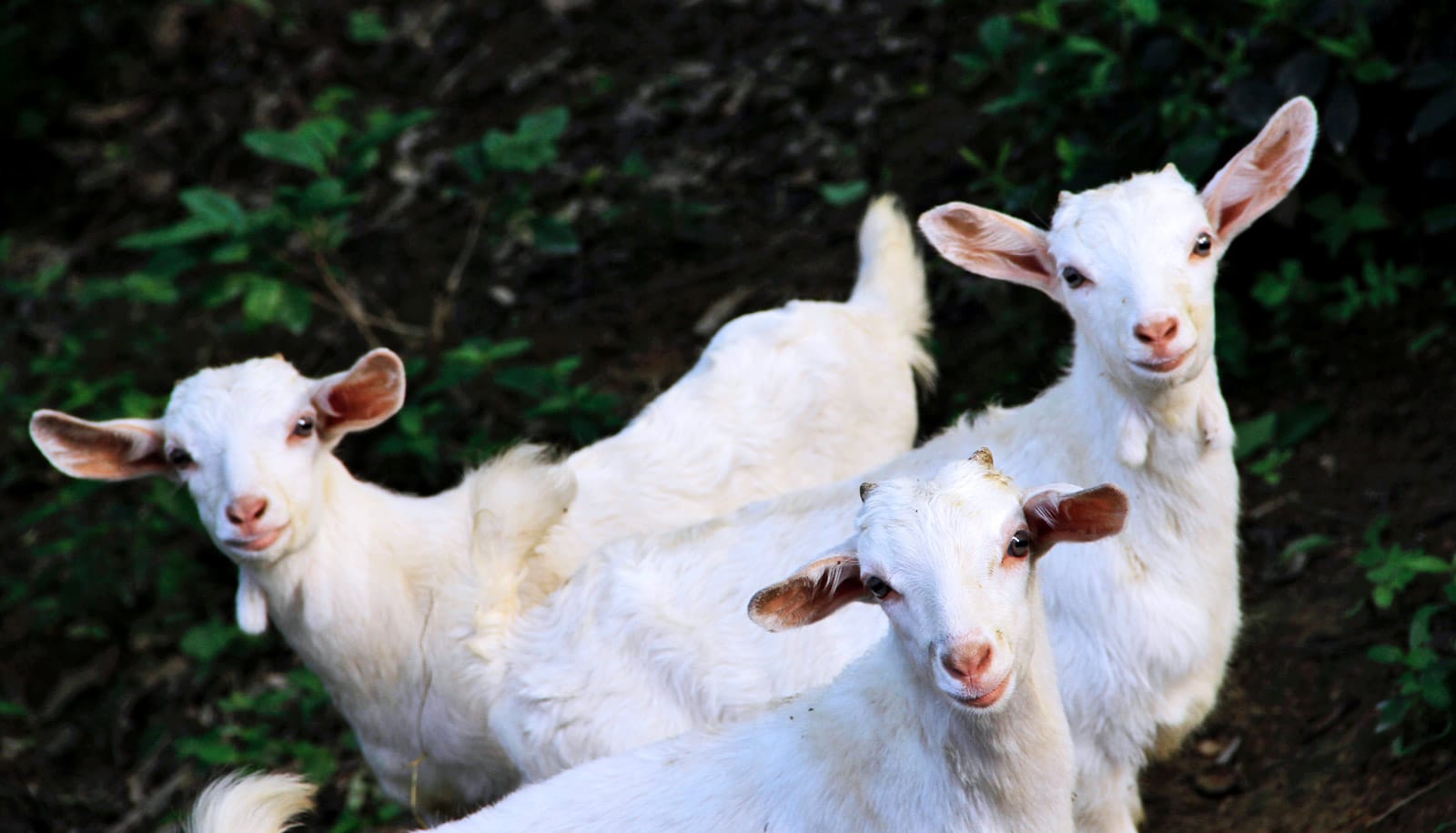Meat and dairy played a more significant role in human diets in Bronze Age China than previously thought, a new study shows.
The movements of ancient crop and animal domesticates across prehistoric Eurasia are well-documented in the archaeological record. What is less well understood: How Bronze Age farmers and herders incorporated newly introduced domesticates—like cows from southwestern Asia—into their long-standing animal husbandry and culinary traditions.
The new analysis suggests that farmers and herders tended to sheep and goats differently than they did their cows, unlike in other parts of the world. They kept cows closer to home and fed them the byproducts of grains that they were growing for their own consumption, like the grass stalks from millet plants.
Bronze Age animal diets
The study published in Scientific Reports integrates new and previously published data from nine sites along the Hexi Corridor, a key region between the Gobi Desert and Tibetan Plateau that facilitated the movement of ancient crops between Central and East Asia.
Petra Vaiglova, postdoctoral research associate, and Xinyi Liu, associate professor of archaeology, both at Washington University in St. Louis, base their analysis on bone records and other isotopic data from humans, animals, and plants.
“Using the method of stable isotope analysis, we looked at the diets of the local herbivores that were managed in the Bronze Age Hexi Corridor of northwestern China,” Vaiglova says. “The results showed that cattle and sheep or goats were managed distinctly in the different ecological niches across the study region. We propose that this was a result of varying management choices made by the local farmers, who aimed to strike a balance between tradition and innovation.
“In previous research, this method has been applied to understanding the nature of human diets, and the role of different domesticates in it,” she says. “In this paper, we switched focus to trying to understand the minutiae of animal diets—and what that tells us about animal management in the Bronze Age.”
Tethered cows
While sheep and goats seem to have eaten naturally available vegetation by grazing in the vicinity of the villages, the scientists found evidence that cattle were both grazed and fed. The cattle bones that the researchers analyzed exhibited a higher input of plants that are more adapted to arid conditions in places where these plants contributed little to the natural vegetation. This group of crops includes millet, which was originally cultivated in Eastern Asia.
These findings suggest that cattle diets were more influenced by human provisioning and that cattle may therefore have been reared closer to the human settlements than sheep and goats.
Liu and other researchers in his laboratory study how social and culinary systems react to novel crops and exotic domestic animals in China. His research has revealed how foreign innovations adopted in ancient Central China were transformed within existing and highly organized social and cultural systems.
“Our results suggest a similar process in the adoption and localization of cattle in the Hexi Corridor, an animal domesticated in a markedly different environment,” Liu says. “In locations with limited grazing lands suitable for pasturing of cattle, people adapted the local pig-rearing economy towards cattle stall-feeding.”
These conclusions resonate with modern ethnographic examples from North China, the researchers say, where cattle are more tethered to human settlements, rather than being allowed to roam on local or more distant pastures alongside sheep and goats.
Understanding past farming and dietary conditions can help us with some of the challenges we face in today’s world, Liu says. Those challenges are as much environmental as social.
“In the context of a warming climate, where soil moisture is predicted to be increasingly depleted on a global scale, one can draw parallels to the Mid-Holocene conditions of northwest China,” Liu says.
“The spread of farming across the Eurasian continent between 5000-1500 BC had profound, long-term social impacts,” he says. “Identifying the specific nature of agricultural innovations in the continental interior can be helpful with cultivation practices in modern-day marginal environments.”
The National Science Foundation supported the work.


